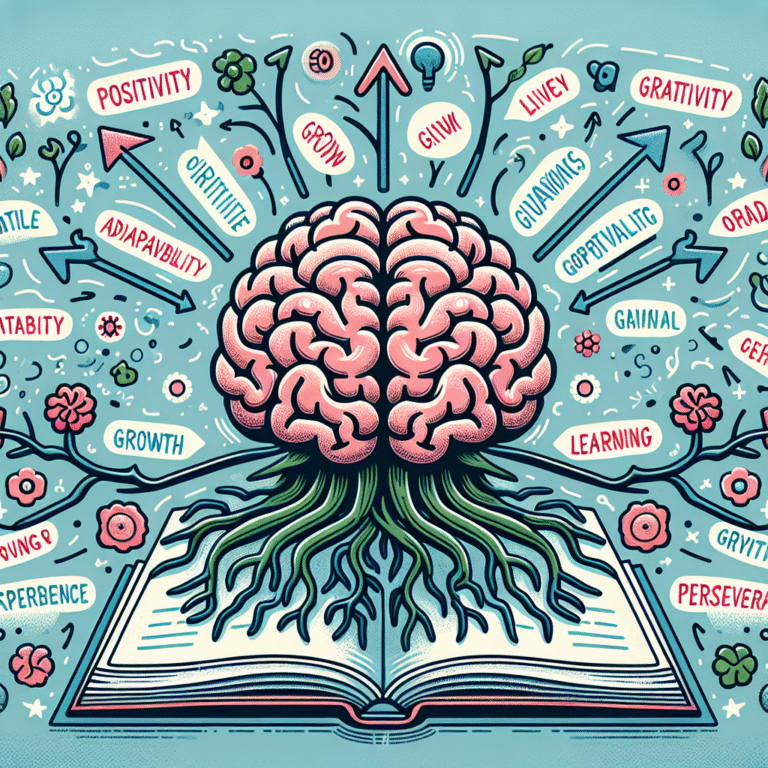
Introduction
In the labyrinth of mental health, change can often feel like an elusive goal, shrouded in uncertainty and fear. Just imagine stepping into a quiet room, where a warm light bathes the surroundings, and you’re greeted with empathy and understanding. This isn’t just any therapy session; it’s a transformative journey fueled by positive reinforcement.
Creating lasting change hinges on recognizing the power of encouragement and reward, rather than focusing solely on the problems at hand. With rising awareness of mental health issues, the effectiveness of methods like positive reinforcement has emerged as a beacon of hope. In this article, we delve into Creating Lasting Change: The Impact of Positive Reinforcement in Therapy. We will explore its scientific basis, weave in compelling case studies, and provide actionable insights for both therapists and individuals seeking growth.
The Foundation of Positive Reinforcement
Understanding Positive Reinforcement
At its core, positive reinforcement is a psychological principle that involves encouraging desired behaviors through rewards or affirmations. Rather than punishing undesirable behaviors, positive reinforcement focuses on building skills and strategies that foster growth and resilience.
The Behavioral Basis
The roots of positive reinforcement can be traced back to B.F. Skinner’s work in behavioral psychology, where he emphasized the importance of rewards in shaping behavior. Today, this principle remains pivotal in many therapeutic practices, showcasing how a focus on positive outcomes can significantly impact an individual’s self-esteem and motivation.
Positive vs. Negative Reinforcement
To outline the distinction:
- Negative Reinforcement involves the removal of an unfavorable condition to encourage a behavior, while
- Positive Reinforcement means providing a favorable outcome following a desired behavior.
Understanding these nuances is crucial for anyone engaged in the therapeutic process.
Case Studies: Real-World Applications
Case Study 1: Behavioral Therapy with Children
In a recent case study involving a child diagnosed with ADHD, therapists employed positive reinforcement tactics to drive attention and focus. Whenever the child successfully completed a task, he received praise and small rewards such as stickers. Over time, not only did his attention span improve, but he also began to take pride in his accomplishments.
Analysis: This case illustrates the practical application of positive reinforcement in a controlled therapy setting. It reinforces the argument that small, consistent rewards can lead to substantial changes in behavior.
Case Study 2: Group Therapy for Anxiety
In a therapeutic group concentrating on anxiety management, participants were encouraged to share their achievements, no matter how small, each week. Positive feedback from peers served as reinforcement. As a result, members reported increased confidence levels and effective coping strategies.
Analysis: The communal aspect of this approach not only fosters a supportive environment but also amplifies the effects of positive reinforcement, creating a chain reaction of constructive feedback.
Case Study 3: Cognitive Behavioral Therapy for Adults
A study on adults undergoing Cognitive Behavioral Therapy (CBT) found that integrating positive reinforcement techniques led to improved outcomes. Clients who received affirmations for adopting healthier behaviors—like exercising or following a meal plan—showed not just short-term results but sustained change over months.
Analysis: By linking positive reinforcement with tangible habits, therapists enhanced the likelihood of long-lasting transformation in their clients’ lifestyles.
The Science Behind Positive Reinforcement
Neurobiological Mechanisms
Understanding the science can deepen our appreciation for Creating Lasting Change: The Impact of Positive Reinforcement in Therapy. Research indicates that positive reinforcement activates the brain’s reward pathways, notably releasing dopamine—often termed the "feel-good" neurotransmitter. When a person experiences a reward, the brain encodes this positive experience, increasing the likelihood of repeating the behavior.
Table 1: Neurotransmitter Response to Positive Reinforcement
| Neurotransmitter | Role in Positive Reinforcement |
|---|---|
| Dopamine | Increases feelings of pleasure and motivation, reinforcing desired behavior. |
| Endorphins | Provide a sense of well-being, which can help alleviate symptoms of depression. |
| Oxytocin | Promotes social bonding and enhances feelings of trust and safety. |
Long-term Impacts on Mental Health
The implications of these neurobiological responses extend beyond immediate gratification. Individuals who experience sustained positive reinforcement are more likely to develop a growth mindset, which is pivotal for long-term mental well-being.
Strategies for Implementing Positive Reinforcement in Therapy
1. Setting Clear Goals
For positive reinforcement to be effective, clarity in goal-setting is vital. Therapists should collaborate with clients to establish realistic, attainable objectives that can be regularly celebrated.
2. Regular Feedback
Ongoing feedback ensures that clients remain aware of both their progress and areas needing attention. This continuous reinforcement loop cultivates motivation and sustains engagement.
3. Individualized Approaches
Different individuals respond to different types of reinforcement. Some may thrive on verbal praise while others may prefer tangible rewards. Understanding these preferences can maximize the effectiveness of positive reinforcement.
4. Incorporating Technology
With the rise of digital platforms, therapists can leverage apps that track progress. Notifications with encouraging messages or reminders can reinforce positive behaviors outside of therapy sessions.
The Role of Positive Reinforcement in Building Resilience
Fostering Grit and Perseverance
Resilience—the ability to bounce back from adversity—is enhanced through positive reinforcement. When clients receive support and acknowledgment in the face of challenges, it builds a foundation of grit and determination.
Cultivating a Growth Mindset
As mentioned earlier, progress facilitated through positive reinforcement nurtures a growth mindset. This mindset is key to navigating life’s ups and downs, allowing individuals to view setbacks as learning opportunities rather than failures.
Conclusion
Creating lasting change is not merely a lofty goal; it is an achievable reality through the impactful use of positive reinforcement in therapy. By shifting the focus from what is wrong to what can be improved and celebrated, therapists can spark profound transformations in their clients.
To close, let’s remember: every tiny victory is a step toward greater resilience and well-being. Utilize positive reinforcement not just in therapy but in everyday life—encouraging yourself and others to embrace growth. As you embark on your journey, remember that change is possible, and with the right tools, it can last a lifetime.
FAQs
1. What is positive reinforcement, and how does it work in therapy?
Positive reinforcement involves rewarding desired behaviors to encourage their repetition. In therapy, this can manifest as verbal praise, tangible rewards, or even self-acknowledgment, all aiming to motivate clients toward positive change.
2. Can positive reinforcement be misused in therapy?
Yes, misuse can occur if rewards are not aligned with therapeutic goals or if they are given for behaviors that should not be reinforced. It’s crucial for therapists to ensure that reinforcements are meaningful and contextually appropriate.
3. Is positive reinforcement effective for everyone?
While positive reinforcement can benefit many, individual responses vary. Some may require alternative motivational strategies. Therapists need to assess individual preferences to maximize effectiveness.
4. How can I implement positive reinforcement in my daily life?
Start by recognizing and celebrating small accomplishments, both in yourself and others. Use affirmations, journaling, or even simple gestures like a thumbs up to foster positivity.
5. How long does it take to see results from positive reinforcement?
Results can vary significantly based on individual circumstances and the consistency of reinforcement. Many individuals notice changes within a few weeks, while others may require more time and patience.
By exploring the depth of Creating Lasting Change: The Impact of Positive Reinforcement in Therapy, we can better understand its significance in fostering personal growth and emotional resilience. Through nurturing a positive environment, we can illuminate the path toward lasting, meaningful change.















